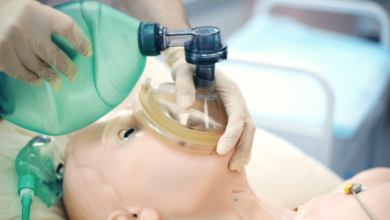Suboxone Treatment: A Lifeline for Opioid Addiction Recovery

Opioid addiction is a widespread issue that impacts millions of individuals across the globe. It can be challenging to overcome, but recovery is possible with the right treatment and support.
One of the most effective Suboxone Treatment Las Vegas for opioid addiction is Suboxone, a medication that has helped many people manage their addiction and regain control of their lives. In this article, we’ll explore how Suboxone serves as a vital tool in opioid addiction recovery, offering improved quality of life and long-term stability, and more.
What Is Suboxone?
Suboxone is a medication that combines two drugs, buprenorphine and naloxone, to help people who are addicted to opioids like heroin, oxycodone, or fentanyl.
Buprenorphine works by reducing cravings and withdrawal symptoms, while naloxone helps prevent misuse of the medication.
Suboxone is typically prescribed as part of a treatment plan that includes counseling and other support services to help individuals overcome their addiction.
How Suboxone Works
Suboxone works by interacting with the opioid receptors in the brain. When someone is addicted to opioids, their brain becomes dependent on the drug to feel normal.
Suboxone helps by activating these receptors just enough to reduce withdrawal symptoms and cravings without causing the high that opioids typically produce. This allows individuals to focus on their recovery rather than constantly battling the urge to use opioids.
Reducing Withdrawal Symptoms
One of the most challenging parts of overcoming Opioid Addiction Las Vegas is dealing with withdrawal symptoms. These symptoms can include nausea, vomiting, sweating, muscle aches, anxiety, and intense cravings for opioids. Suboxone helps reduce the severity of these symptoms, making it easier for people to stop using opioids.
By easing withdrawal, Suboxone allows individuals to begin their recovery journey without the intense physical discomfort that often accompanies opioid detox.
Lowering Cravings
Cravings for opioids can be overwhelming and are a major reason why many people relapse. Suboxone helps reduce these cravings by partially activating the brain’s opioid receptors.
While it doesn’t provide the same high as opioids, it satisfies the brain’s need for the drug, which helps reduce the urge to use. This can make it much easier for people to stay focused on their recovery and avoid relapse.
Decreased Risk of Overdose
One of the greatest risks associated with opioid addiction is the possibility of overdose. People who use opioids regularly build up a tolerance to the drug, meaning they need more of it to achieve the same effect.
This increases the risk of taking too much, leading to an overdose, which can be fatal. Suboxone reduces the risk of overdose in several ways.
First, because it only partially activates the brain’s opioid receptors, it doesn’t cause the same level of respiratory depression (slowed breathing) that opioids like heroin or fentanyl do.
Second, the naloxone in Suboxone helps prevent misuse of the medication by making it difficult to inject or misuse.
Long-Term Maintenance and Stability
Suboxone can be used as part of a long-term maintenance plan for opioid addiction recovery. Many people find that staying on Suboxone for an extended period helps them maintain their sobriety and avoid relapse.
By reducing cravings and withdrawal symptoms over the long term, Suboxone provides individuals with the stability they need to focus on rebuilding their lives.
During this time, patients typically engage in counseling, therapy, and support groups to address the underlying issues that contributed to their addiction.
Improved Quality of Life
One of the most significant benefits of Suboxone treatment is improving quality of life. Addiction can take over every aspect of a person’s life, from their relationships and job performance to their physical and mental health.
Suboxone helps individuals regain control by reducing the constant cravings and withdrawal symptoms that keep them trapped in the cycle of addiction.
With Suboxone treatment, people can begin to repair relationships, return to work or school, and take better care of their health.
Fewer Side Effects Compared to Other Treatments
While there are other medications available to treat opioid addiction, such as methadone, Suboxone has fewer side effects and is considered safer.
Methadone, for example, must be taken under strict supervision and has a higher risk of overdose. Suboxone, on the other hand, can often be prescribed to take at home, giving individuals more freedom and flexibility in their treatment.
Additionally, Suboxone has a lower risk of abuse due to the presence of naloxone, which makes it harder to misuse the medication.
Accessible and Convenient Treatment
Suboxone treatment is widely available and can be prescribed by doctors in many different settings, including primary care offices, addiction treatment centers, and hospitals. This makes it more accessible for people who may not live near a specialized addiction treatment center.
Since Suboxone can often be taken at home, it’s also a more convenient option for individuals with busy lives or responsibilities that make daily clinic visits challenging.
Conclusion
Suboxone provides crucial assistance in the battle against the challenging journey of opioid addiction.
By reducing withdrawal symptoms, lowering cravings, and helping individuals maintain stability in their recovery, Suboxone has proven to be a life-changing treatment for many.
When combined with therapy and support, it can help people break free from the cycle of addiction and build a healthier, more fulfilling life.
If you or someone you know is struggling with opioid addiction, consider discussing Suboxone treatment with Partida Corona Medical Center to explore this option for recovery.







